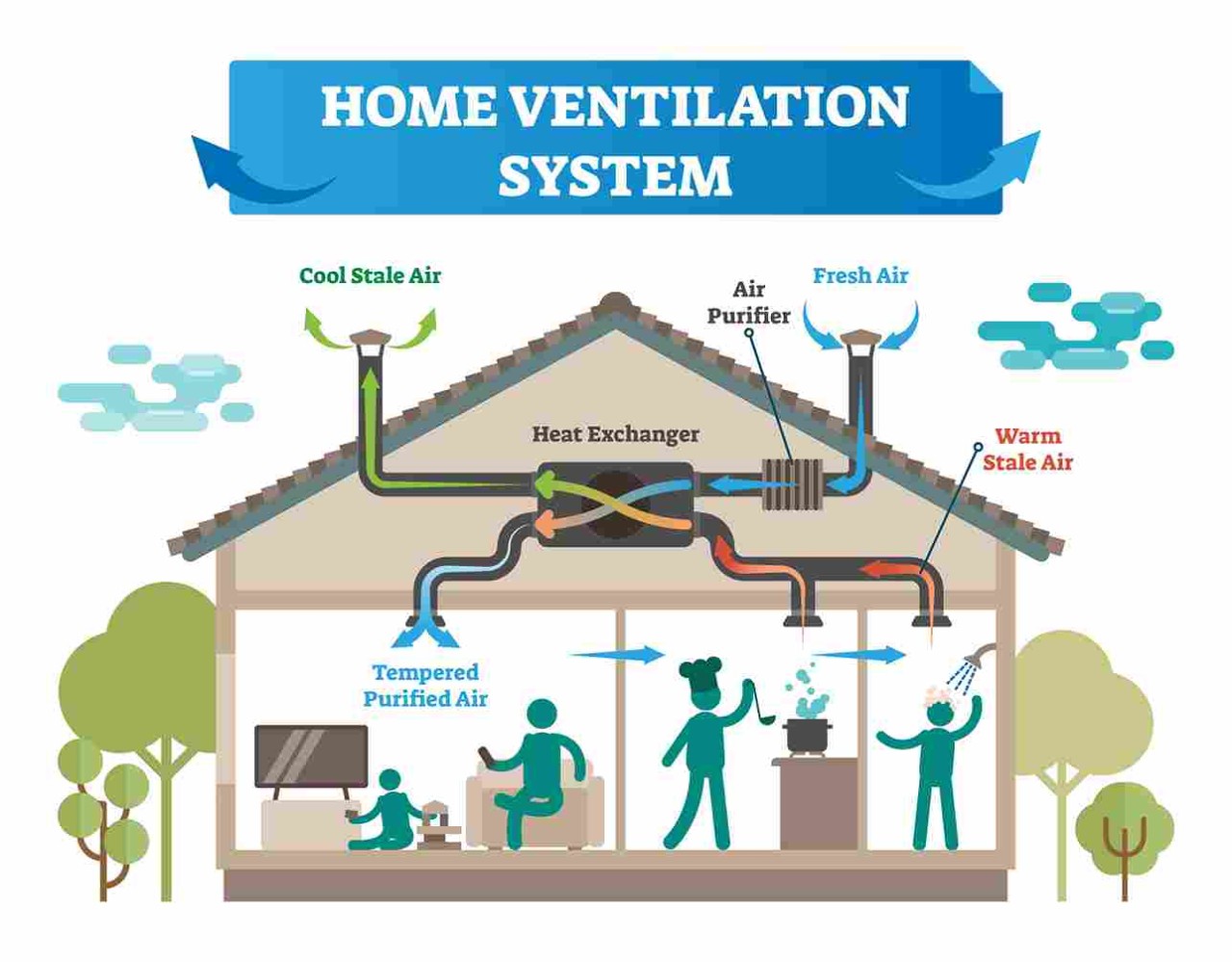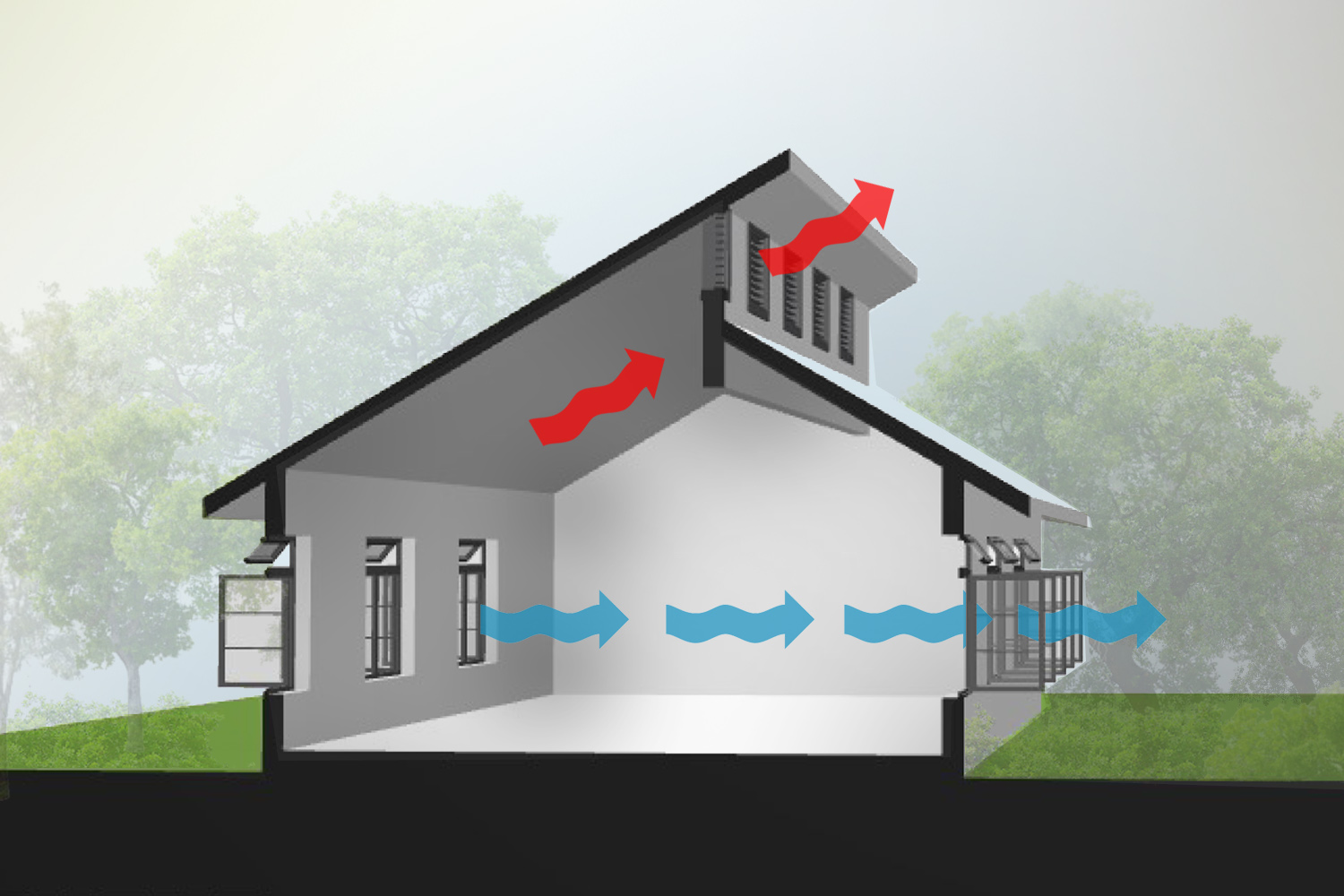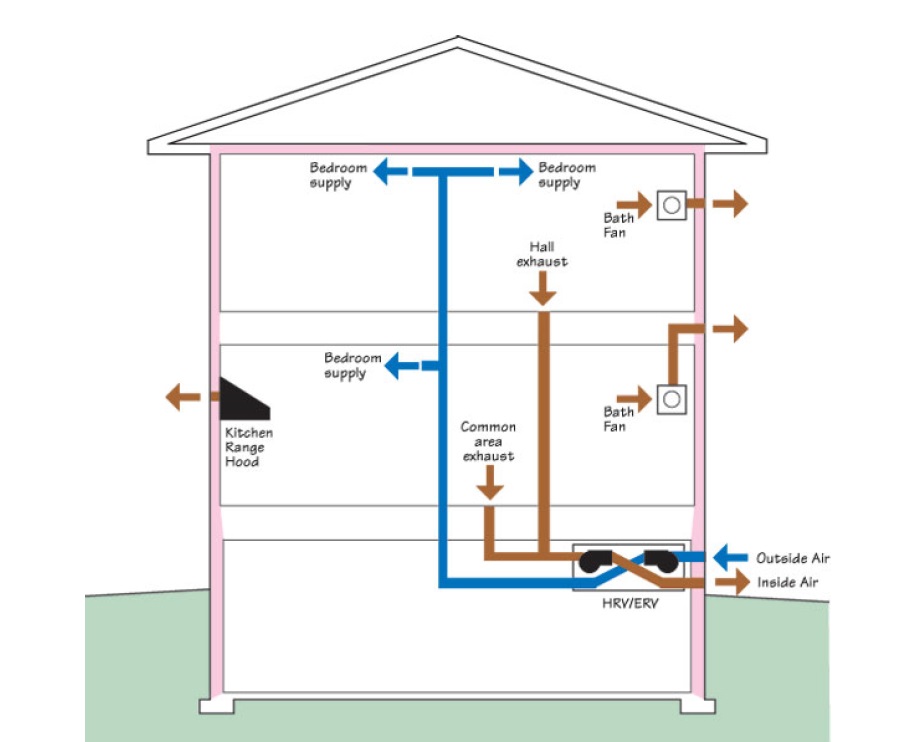How to Improve Indoor Air Quality with Home Ventilation Melbourne
Wiki Article
Understanding the Relevance of Home Ventilation for a Healthier Living Atmosphere
Home air flow plays a crucial role in keeping a healthy and balanced living atmosphere. It facilitates the exchange of exterior and interior air, which is vital for enhancing air high quality. Without appropriate ventilation, homes can end up being reproducing grounds for allergens and toxins. The consequences of poor air flow can be significant. This raises the questions of exactly how home owners can efficiently execute air flow strategies to guard their health and well-being. Recognizing these approaches is essential.
The Fundamentals of Home Ventilation
Home air flow functions as an important component of indoor air quality and comfort. It entails the process of exchanging stagnant interior air with fresh exterior air, consequently minimizing humidity and managing temperature level. Appropriate air flow systems can consist of all-natural approaches, such as open windows and vents, along with mechanical systems, such as exhaust followers and air exchangers. Reliable home air flow assists prevent problems like interior mold and mildew growth and the buildup of harmful bits. It also improves overall energy efficiency, as well-ventilated areas can keep comfy temperatures with less dependence on home heating and cooling systems. Recognizing the basics of home air flow is crucial for property owners seeking to produce a healthier living environment on their own and their families.
Typical Sources of Indoor Air Air Pollution

Although numerous might not recognize it, indoor air pollution can originate from various resources within a home. Common contributors consist of unstable natural compounds (VOCs) released from paints, solvents, and cleansing products. Household home appliances, such as gas ranges and fire places, can launch hazardous gases like carbon monoxide gas and nitrogen dioxide. In addition, mold and mildew grow in damp areas, releasing spores that impact air top quality. Animal dander, dirt mites, and plant pollen can gather inside your home, more exacerbating air pollution levels. Smoking indoors generates toxic chemicals that stick around in the air. Finally, building materials, including asbestos and formaldehyde, can off-gas harmful materials. Acknowledging these sources is essential for preserving a much healthier interior environment and advertising reliable ventilation methods.
Health Impacts of Poor Ventilation
Indoor air pollution can have considerable health and wellness implications, especially when ventilation is insufficient. Poor air flow can result in the build-up of harmful contaminants, such as unstable natural compounds, mold and mildew, and particulate issue. This build-up may cause respiratory system concerns, including bronchial asthma, allergic reactions, and chronic obstructive pulmonary condition. People may experience symptoms like headaches, tiredness, and irritation of the eyes, nose, and throat. Susceptible populations, such as children and the senior, go to higher threat for serious health results. Lasting exposure to poorly aerated atmospheres can also contribute to much more severe problems, including cardiovascular conditions. Making sure proper air flow is vital for maintaining a healthy and balanced living setting and minimizing the danger of wellness difficulties connected with interior air pollution.Efficient Ventilation Techniques for Your Home
Proper air flow is important for maintaining a healthy and balanced indoor setting, and carrying out efficient methods can considerably boost air quality. Homeowners can begin by making certain that exhaust followers are mounted in shower rooms and kitchen areas to get rid of excess moisture and smells. Opening up windows on a regular basis enables fresh air to circulate, especially throughout moderate climate. Additionally, utilizing air cleansers with HEPA filters can help record air-borne contaminants. For homes with home heating and cooling down systems, preserving a/c systems and changing filters on a regular basis is important for peak efficiency. Including all-natural ventilation strategies, such as cross-ventilation, can additionally improve airflow. Sealing any leaks in windows and doors avoids undesirable drafts, which can disrupt controlled airflow, ultimately leading to enhanced interior air high quality and comfort.Preserving Ideal Air Top Quality Year-Round
To keep suitable air quality year-round, house owners must adopt a positive strategy to managing their interior environment. Routinely monitoring indoor air top visit our website quality is crucial; this consists of checking for pollutants such as dust, mold, and unstable organic great site compounds (VOCs) Executing effective air flow systems, such as exhaust followers and air cleansers, can significantly lower airborne pollutants. In addition, routine upkeep of cooling and heating systems warranties peak efficiency and air flow. Property owners must also take into consideration humidity degrees, as extreme moisture can cause mold development. Seasonal adjustments might require modifications in ventilation methods to fit differing outdoor air quality. By prioritizing these techniques, home owners can produce a much healthier home, advertising overall well-being for all occupants throughout the year.Often Asked Concerns
Just How Can I Inform if My Home Requirements Much Better Ventilation?
To figure out if a home needs much better ventilation, one must observe indications such as persistent moisture, mold and mildew growth, mildewy smells, condensation on home windows, or raised allergic reaction symptoms, indicating poor air flow and possibly inadequate indoor air high quality.What Are the Indications of Poor Indoor Air Quality?

Can Houseplants Improve Indoor Air Top Quality Properly?
The efficiency of houseplants in improving indoor air top quality is discussed. While some studies suggest they can take in contaminants and create oxygen, their website here general effect might be marginal compared to correct air flow and air purification systems.Exactly how Frequently Should I Modification My Air Filters?
The regularity of air filter modifications typically depends on use and filter type. Generally, it is advised to replace filters every 3 months, though homes with allergies or pet dogs may need even more constant modifications for suitable performance.Exist Any Specific Air Flow Equipments for Allergy Sufferers?
Lots of ventilation systems, such as HEPA-filtered units, properly minimize irritants in the air. Home Ventilation Melbourne. These systems trap pet, dirt, and pollen dander, supplying allergy patients with a cleaner, healthier indoor environment while managing air quality properly
It facilitates the exchange of outside and indoor air, which is crucial for boosting air high quality. Home air flow offers as an essential element of indoor air high quality and comfort. It involves the procedure of exchanging stale interior air with fresh outside air, consequently decreasing moisture and managing temperature level. Indoor air pollution can have significant health implications, specifically when air flow is poor. Appropriate ventilation is crucial for keeping a healthy and balanced interior setting, and applying effective approaches can considerably improve air top quality.
Report this wiki page